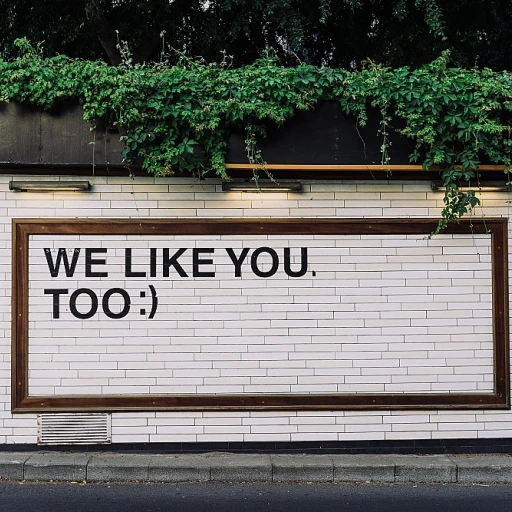Understanding the Role of Door Hanger Signs in the Workplace
Revolutionizing Workplace Communication with Door Hanger Signs
In the fast-paced environment of modern New Zealand offices, effective communication plays a vital role in maintaining productivity. Door hanger signs, often overlooked, are now being recognized for their potential to enhance communication and efficiency in the workplace. While most people associate these signs with hotels, where they serve the "do not disturb" function, their utility goes beyond the hospitality industry.
In an office setting, door hangers serve a variety of purposes. They can indicate a "meeting in progress," suggest a "do not disturb" moment, or simply label a room for specific functions, like indicating a restroom or conference room. These double-sided signs can be swiftly changed to display various messages, making them flexible tools for office communication. Opting for a plastic door sign ensures durability, especially in busy workspaces.
Another aspect to consider is the affordability and ease of use of these signs. A typical sign pack often includes multiple options to cater to different needs. Plus, with free shipping offerings available from various vendors, businesses can easily procure these essential office tools without breaking the bank. For New Zealand companies focusing on enhancing efficiency, integrating door hangers into office spaces is a straightforward, practical solution.
Understanding the role these signs play is essential as offices across New Zealand strive to streamline operations. For more on boosting efficiency in your workplace, explore how a simple
credit application progress tracker can work wonders.
Benefits of Implementing Door Hanger Signs in New Zealand Offices
Why Door Hanger Signs Make Sense for Kiwi Workplaces
In New Zealand offices, enhancing workplace efficiency is a critical goal, and door hanger signs are proving to be a simple yet effective tool to help achieve this. Implementing these signs in a corporate setting can streamline communication and reduce unnecessary interruptions.
One of the most noticeable benefits of door hanger signs is their ability to clearly signal the current status of a room or office space. Whether it's a 'Do Not Disturb' sign during a critical meeting or a 'Meeting in Progress' notification, these signs can help maintain a focused environment by preventing unwanted disruptions.
Moreover, the versatility of door hanger signs extends to various scenarios. In a packed office, distinguishing between occupied and vacant restrooms using restroom signs can improve guests' experiences and simplify the workflow for staff members. Plastic door signs are also durable and can withstand frequent use, providing a long-lasting solution at an affordable price.
Additionally, modern signs come with features like being double sided, which enhances their functionality without the need for additional signs. This dual-purpose design can save companies money, especially in larger office settings with many rooms to manage.
For a broader context on how door hanger signs can dovetail with other efficiency tools and time-saving practices, delve into strategies detailed in our post on
mastering time management in New Zealand companies. By adopting such effective communication aids, offices across New Zealand can witness an enhancement in overall productivity and operational flow.
Of course, the best results are seen when companies assess their unique needs and custom design their signs accordingly. Considering factors like room usage and the workplace culture will ensure these tools are used to their fullest potential, leading to optimized office communication.
Design Considerations for Effective Door Hanger Signs
Crafting Door Hanger Signs for Optimal Impact
Designing door hanger signs that effectively communicate while seamlessly integrating into the office environment is crucial. With numerous considerations such as size, color, and material, selecting the right design elements can significantly enhance workplace efficiency.
- Material and Durability: Choosing durable materials like plastic ensures longevity and withstands the wear and tear of daily use. Opting for double-sided signage provides visibility regardless of door position, making sure the message is always clear.
- Clarity and Visibility: The wording on the door hangers should be large and legible from a distance. Using contrasting colors can help catch attention quickly, a critical factor for ensuring that a 'do not disturb' sign isn't easily overlooked during a meeting in progress.
- Customization: Tailoring signs to specific office needs, such as creating custom restroom signs or personalized meeting room signs, enhances their utility. Additionally, including icons or ADA signs ensures that they are accessible to all staff, improving overall communication.
- Adaptability: Consider designs that serve multiple purposes, like signs that can be flipped or adjusted to indicate different messages. This is particularly useful in dynamic office settings where spaces like meeting rooms or restrooms require varied messages.
When considering the move towards these signs, factors like price, shipping, and ease of implementation must be weighed. The vast availability of signs in pack options allows for cost-effective scaling across multiple rooms or office floors. Free shipping and sign packs can further reduce the overall investment, making the transition smoother.
For companies keen on refining their office communication tools, further insights on supporting work-life balance can help inform successful sign implementation, as explored in
this related resource.
Challenges in Adopting Door Hanger Signs in New Zealand
Addressing Practical Hurdles in Adopting Door Hangers
Integrating door hanger signs into New Zealand offices undoubtedly presents some challenges. For starters, the wide variety of existing office door designs might complicate the process. Many office doors differ significantly in material, size, and the presence of door knobs or lack thereof, which can affect the ability to easily place door hangers. Some doors, particularly in upscale or modern buildings, might even lack handles entirely, thus necessitating alternative solutions.
Another hurdle involves the material and design of the signs themselves. Offices must carefully select durable materials—like plastic door signs—that can withstand regular wear and tear to ensure long-term use. This brings in the consideration of price; businesses will need to balance the cost of acquiring high-quality materials with their budget constraints. Door signs should be double-sided to increase versatility, such as a door hanger displaying "Do Not Disturb" on one side and "Meeting In Progress" on the other. Free shipping offers can mitigate costs but may limit supplier options.
Furthermore, a comprehensive understanding of workplace etiquette is crucial. A door sign with a "Do Not Disturb" notice might be misinterpreted if not observed as part of pre-defined protocols. Training and clear communication regarding the intended use of each sign will enhance their effectiveness.
Moreover, addressing logistical issues, such as ensuring a consistent supply and the quick replacement of lost or damaged signs, requires precise inventory management. Buying in bulk or acquiring a sign pack might mitigate this, but initial shipping wait times or delays can temporarily disrupt workflow.
Solutions to these challenges can draw inspiration from other industries, like hotels, where door hangers are standard practice. Learning from their experience can provide valuable insights into practical application and overcoming potential barriers, ensuring successful adoption in New Zealand offices. Adapting restroom signs and personalized room signs to specific company aesthetics also ensures cohesive branding without compromising on utility. Practical measures, like using distinctive colors or incorporating ADA-compliant designs, might further optimize their effectiveness.
Case Studies: Successful Use of Door Hanger Signs
Real-World Applications and Success Stories
To truly understand the impact of door hanger signs in workplace environments, we've delved into various businesses across New Zealand where these tools have been successfully integrated. These examples showcase both the remarkable effectiveness and the practical challenges that might arise when adopting such signage.
One prominent example involves a bustling hotel located in Auckland. Here, the use of double-sided plastic door hangers increased guest satisfaction by clearly indicating when rooms were occupied or in need of cleaning. The double-sided design featured prominent "Do Not Disturb" and "Please Clean Room" messages, significantly reducing unnecessary disturbances. The hotel management noted a noticeable improvement in staff efficiency as housekeeping could better manage their rounds without frequent knocks disrupting guests.
In office settings, another New Zealand company experienced benefits by utilizing door hangers to signal "Meeting in Progress" during important discussions. This simple addition helped cultivate an environment where employees felt respected and interruptions were minimized. By reducing the chances of unexpected disturbances, team members could concentrate better on their tasks, leading to enhanced productivity.
However, the transition wasn't without its challenges. For instance, a tech startup in Wellington faced pushback from some employees who preferred digital notifications over traditional door signs. To overcome this hurdle, the company decided to offer a pack of customizable door hangers during a team-building exercise, ensuring that all staff members could appreciate both physical and digital communication methods.
Lastly, the adaptation of ADA-compliant room signs was executed by a corporate office in Christchurch. The initiative was particularly focused on ensuring accessibility for all employees and guests, by incorporating restroom signs with braille and clear, easy-to-read print. While initially concerned about the cost and shipping time, management found that bulk purchasing reduced the overall price, and free shipping offers from providers supported a cost-effective transition.
These examples underline the importance of considering both the benefits and potential barriers when integrating door signs into the workplace. By learning from the experiences of others, New Zealand businesses can effectively navigate these challenges, ultimately enhancing how their spaces operate with these quintessential, yet impactful tools.
Innovative Approaches to Office Communication
The utilization of door hanger signs in New Zealand offices is not a novel concept, yet its future holds promising advancements. As the workplace continuously evolves to address emerging challenges and prioritize efficiency, the integration of new technologies and trends in office communication can greatly enhance the utility of these signs.
One of the predominant trends is the increasing demand for customizable and flexible communication tools. Door hangers are shifting from simple "Do Not Disturb" indicators to multi-functional tools that can accommodate various messages, such as "Meeting in Progress," "Restroom Occupied," or "Free Room." This flexibility allows offices to efficiently manage space and ensure minimal disruptions.
The material and design of door hanger signs are also poised for innovation. There is a move towards creating more sustainable options, such as eco-friendly, durable plastic door hangers. Additionally, options for double sided printing not only provide cost-efficiency but also reduce clutter by offering two useful messages in one compact form.
Moreover, with increased digital integration, the idea of "smart door hangers" is becoming a reality. These could potentially be linked to office management systems, allowing for real-time updates or alerts. For example, when entering a meeting room, staff could simply "sign knock" with an app, instantly updating the door knobs with the necessary sign, or use a barcode to indicate the office status. This technology can facilitate smoother communication processes, especially in larger office complexes or hotel environments.
While the upfront price of such advanced systems might be a consideration for some, the long-term benefits of improved efficiency and coordination are numerous. Additionally, many companies are now offering free shipping on bulk order of door hanger packs, making the transition more cost-effective.
Adapting to these future trends will place New Zealand offices at the forefront of efficient workplace communication, ensuring that team productivity is maximized and that any disturbances are minimized. As these trends continue to develop, businesses that embrace these innovations will find themselves better equipped to navigate the ever-changing landscape of office dynamics.







